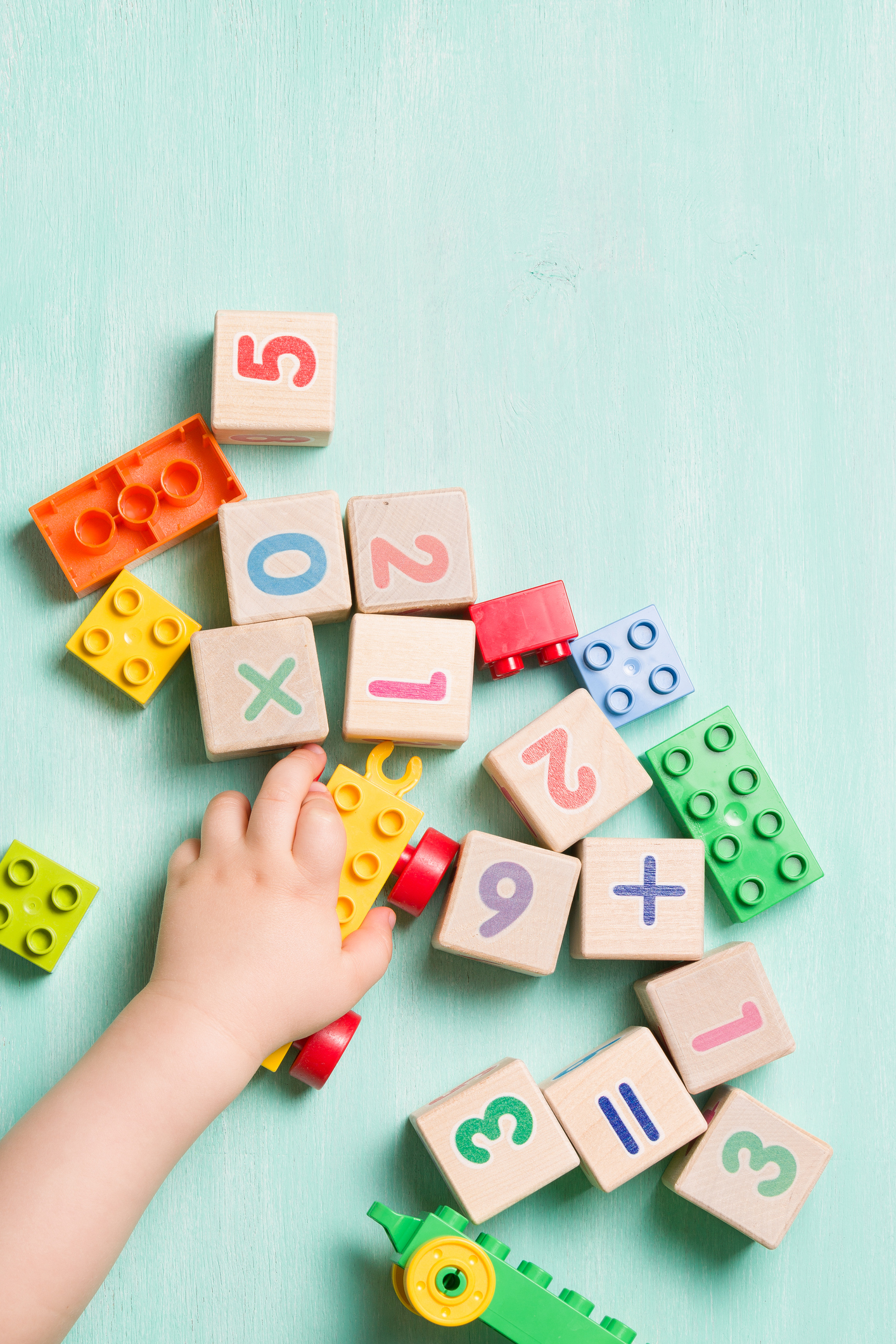- 877.624.2602
- Schedule a Tour
Our Blog: September 28, 2021

Math is an essential part of daily life at any age. For adults, math is found in common, everyday tasks like paying the bills, creating a recipe, or making simple home repairs. In early education, math instruction should focus on integrating mathematical concepts that are engaging and relevant to a child’s experiences and knowledge. Doing so, ensures that math is seen as a useful skill in the lives of students throughout their school years, and beyond.
Try the following ideas to help expand your child’s math skills at home, by making it simple and easy to understand depending on their age:
Infants
- Read plenty of number books with your child. As you read, point to the numbers and images used to represent them.
- Point out and identify different shapes. For example, “This paper is a rectangle. This plate is a circle. This sign is a square.”
- When talking to your child, introduce sequencing. Your morning schedule provides a great opportunity—first you wake up, next you eat breakfast, and last you get dressed.
Toddlers/Twos
- Encourage your child to make familiar shapes out of playdough, such as squares, triangles, and circles.
- Label your child’s toy boxes with a picture of what belongs inside. When cleaning up, encourage your child to place their toys in the box with the matching picture.
- While playing with your child, encourage them to count objects. This could include blocks, stuffed animals, balls, etc.
Preschool/Pre-Kindergarten
- While coloring, put two crayons next to each other. Line up the ends and ask which one is longer. If they answer correctly, shift the crayons so the ends are no longer lined up and ask the same question.
- Model mathematical language when possible. For example, “There were four of us at the dinner table, but one person left. Now, there are less people at the table.”
- Provide opportunities to experiment with non-standard measuring tools such as bowls, spoons, and cups. Encourage critical thought by asking questions such as, “How many scoops of water do you think could fit in this bowl?”
School Age
- Encourage your child to think about fractions. For example, ask how you should cut a sandwich so that you create two equal pieces.
- While your child is playing with a group of toys, ask them to sort the objects by size, color, or type. Once they have done this, ask to follow up questions. If using animals, sort by those living on land vs. those living in water. Ask about the total number of animals and how many would remain if you took away all the water animals.
- Play games involving an auditory pattern. Create a sequence for them to listen to, then ask them to repeat it.
